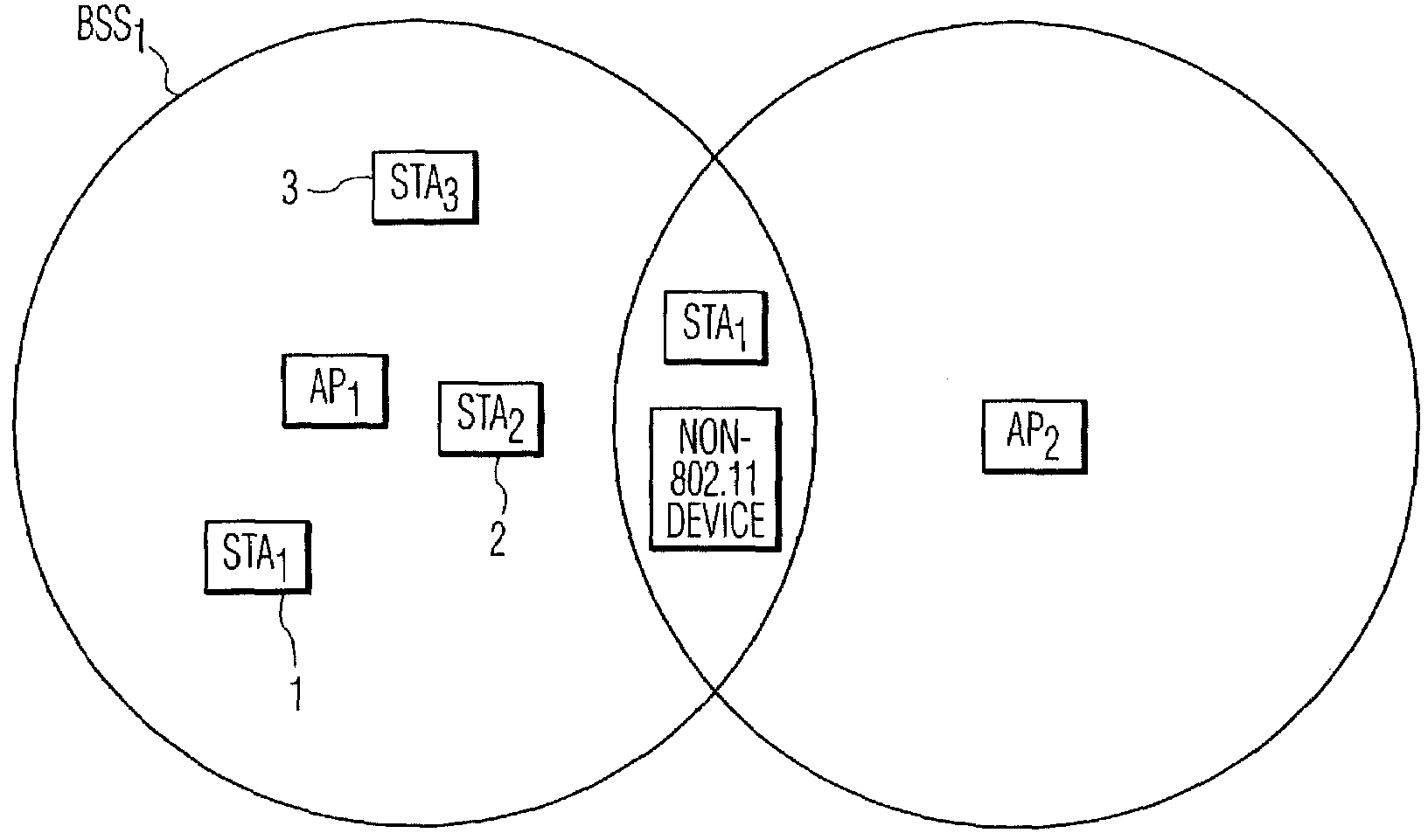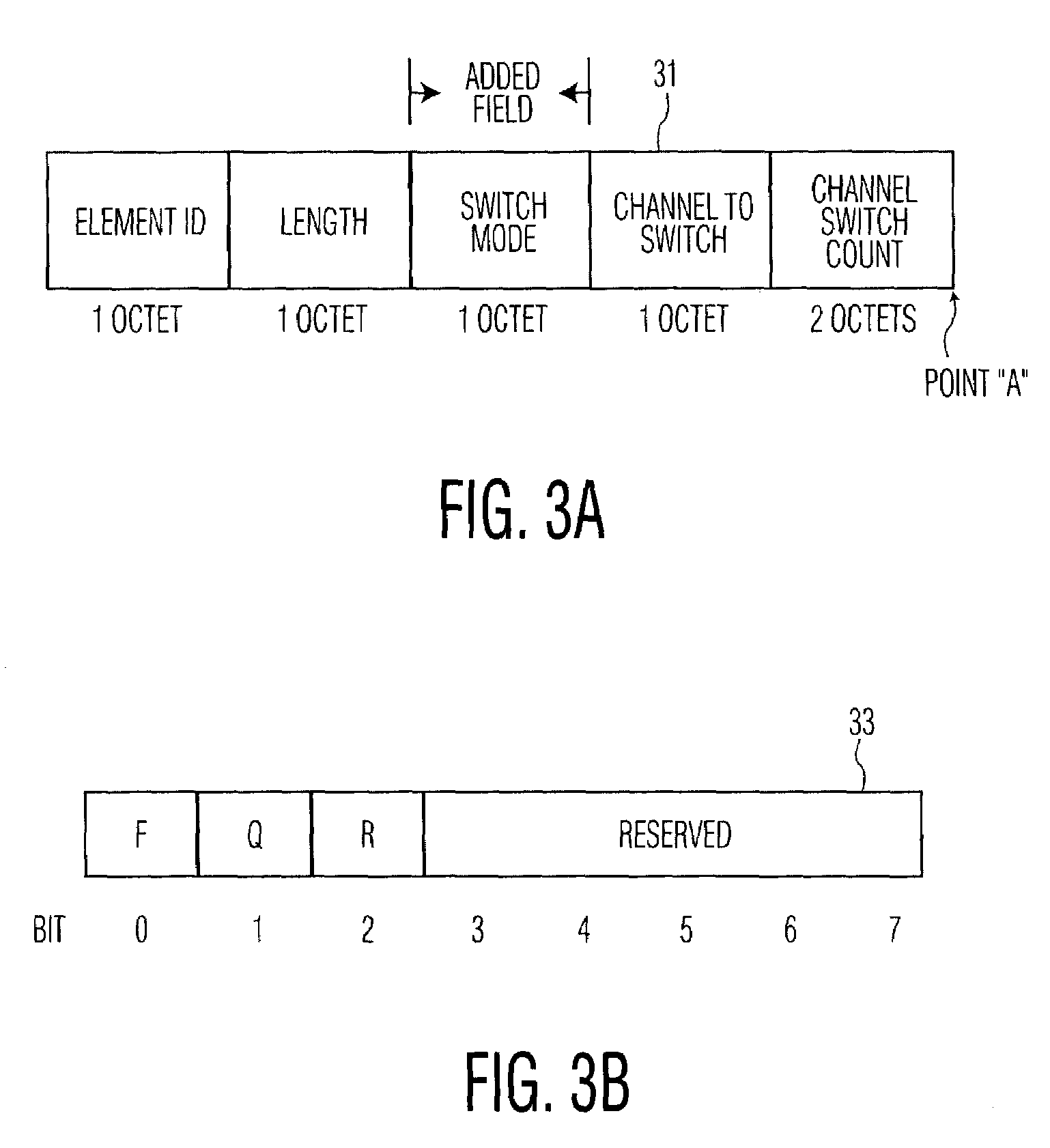Fast channel switching scheme for IEEE 802.11 WLANs
- Summary
- Abstract
- Description
- Claims
- Application Information
AI Technical Summary
Benefits of technology
Problems solved by technology
Method used
Image
Examples
Embodiment Construction
[0022]In the following description, for purposes of explanation rather than limitation, specific details are set forth such as the particular architecture, interfaces, techniques, etc., in order to provide a thorough understanding of the present invention. For purposes of simplicity and clarity, detailed descriptions of well-known devices, circuits, and methods are omitted so as not to obscure the description of the present invention with unnecessary detail.
[0023]The present invention relates to a fast-channel-switching scheme for reducing channel-switching latency to prevent interference with the operations of other co-located systems, such as radar systems performing mission-critical functions in the 5 GHz band. It should be apparent to those skilled in the art that this invention can be easily extended to other frequency bands, such as 2.4 GHz, using different physical-layer specifications, such as the IEEE 802.11b PHY specification.
[0024]FIG. 1 illustrates a representative netwo...
PUM
 Login to view more
Login to view more Abstract
Description
Claims
Application Information
 Login to view more
Login to view more - R&D Engineer
- R&D Manager
- IP Professional
- Industry Leading Data Capabilities
- Powerful AI technology
- Patent DNA Extraction
Browse by: Latest US Patents, China's latest patents, Technical Efficacy Thesaurus, Application Domain, Technology Topic.
© 2024 PatSnap. All rights reserved.Legal|Privacy policy|Modern Slavery Act Transparency Statement|Sitemap



